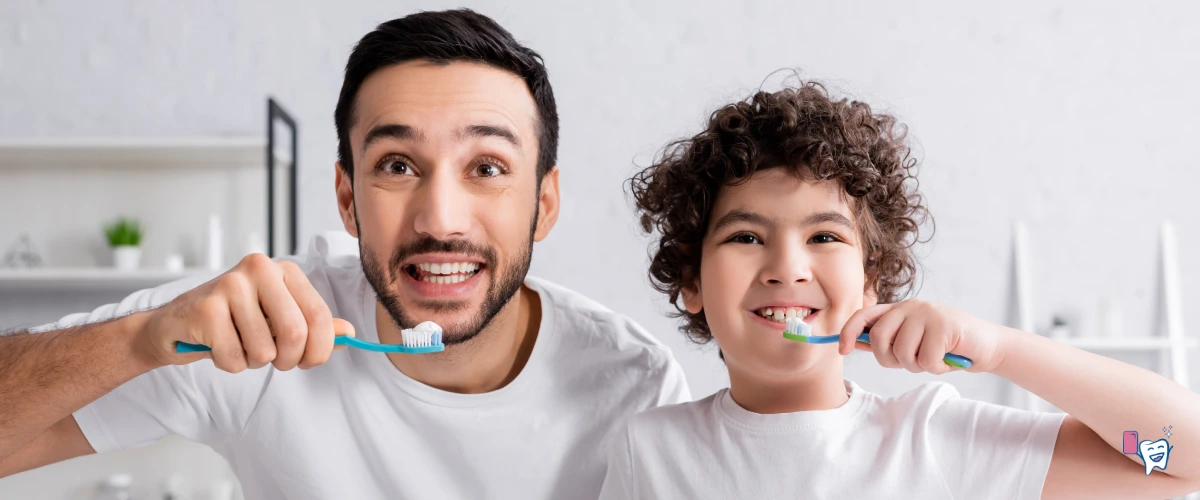Teeth are an important part of your overall appearance. Do you smile with confidence when people are around you or do you have to keep your mouth closed due to yellow-stained teeth? If this is you, you need to learn the best way to brush your teeth. It will make your teeth cleaner, and healthier. You can get your teeth cleaned through a professional service. For this, you have to maintain their cleanliness at home. Before we look into the best way to brush our teeth, we will understand how our teeth work.
| Why is Brushing Teeth Important? | Advantages Of Effective Brushing | Tips For Children | References |
Why is Brushing Teeth Important?
Tiny bits of food consumed would remain stuck in your teeth and even gums. Bacteria of the oral cavity feed on this food. This eventually turns it into a yellowish layer known as plaque. [1] You have to make sure that plaque doesn’t stay on your teeth for too long, as it will turn into hard calculus. Once it’s hard, it would be difficult to remove it through brushing.
If left untreated, bacteria inside the calculus will tear down enamel by producing acids. It may result in cavities or infection in severe cases. These bacteria can negatively affect the gums, the ligaments, and the jaw bone. These poor oral health conditions are due to improper brushing of teeth. Here are a few tips to clean your teeth effectively:
Opt for a Good Toothbrush
The first step in getting cleaner teeth is choosing the right toothbrush. Do you get confused with the variety of options available in the market? Choose a soft bristled brush, if you have a sensitive oral cavity. If you don’t have gum problems, you can choose medium bristles. Hard bristles are not recommended as they may cause irritation or bleeding. Make sure you keep changing your toothbrush every 6 months.
Electric toothbrushes are now available, and they can reduce plaque and bleeding sores [2]. Yet, they don’t guarantee cleanliness if you are unaware of the right technique. So, learning the right strategy is important.
Opt for a brush with a small head. It should be able to reach all corners of the teeth. The handle should be appropriate for your hand size so you can enjoy brushing.
Use a Flouride Toothpaste
Brush your teeth with fluoride toothpaste at least 2 minutes in the morning and 2 minutes in the evening. It means you have to brush for 4 minutes every day! You have to give equal time to all sides of the teeth, which can be 30 seconds for each section. Fluoride helps to eradicate plaque.

Use the Bass Method
A common mistake is using a toothbrush at a 90-degree angle, to the teeth. Among the best methods is the Bass technique. In this technique, the brush should not be perpendicular. Open your mouth wide, and hold your brush at a tilted 45-degree angle. The tip should be where the gums and tooth crown are connected.
Brush Movements
Rotate your brush in a circular motion for the best cleaning. Don’t move it in a to-and-fro motion, it will cause roughness. Move the bristles gently in a circular motion. Make sure you clean the food particles on the gums.
Additional Tips
- Focus on your brushing technique, rather than doing different tasks. While you are brushing, your full attention should be on that.
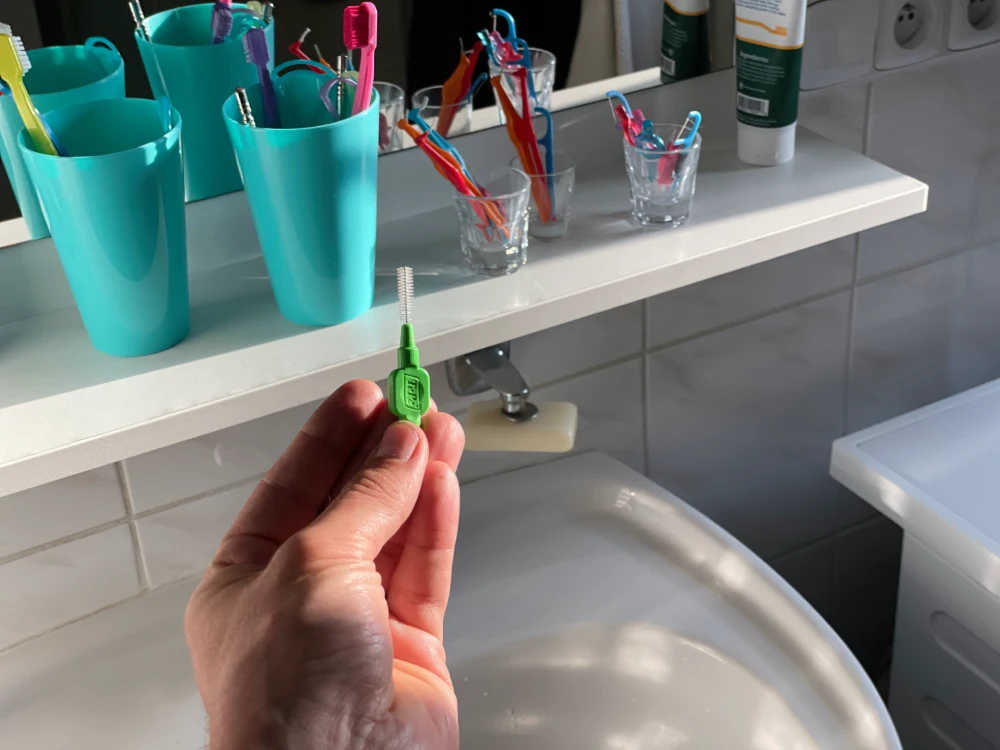
- We recommend brushing your teeth with interdental floss or an interdental brush – this is the best additional method of brushing your teeth. Their use can reduce the incidence of tooth decay if you spend a little more time on your teeth. In this case, it always pays off! The most residues remain in the interdental spaces, which you can only clean using these products.
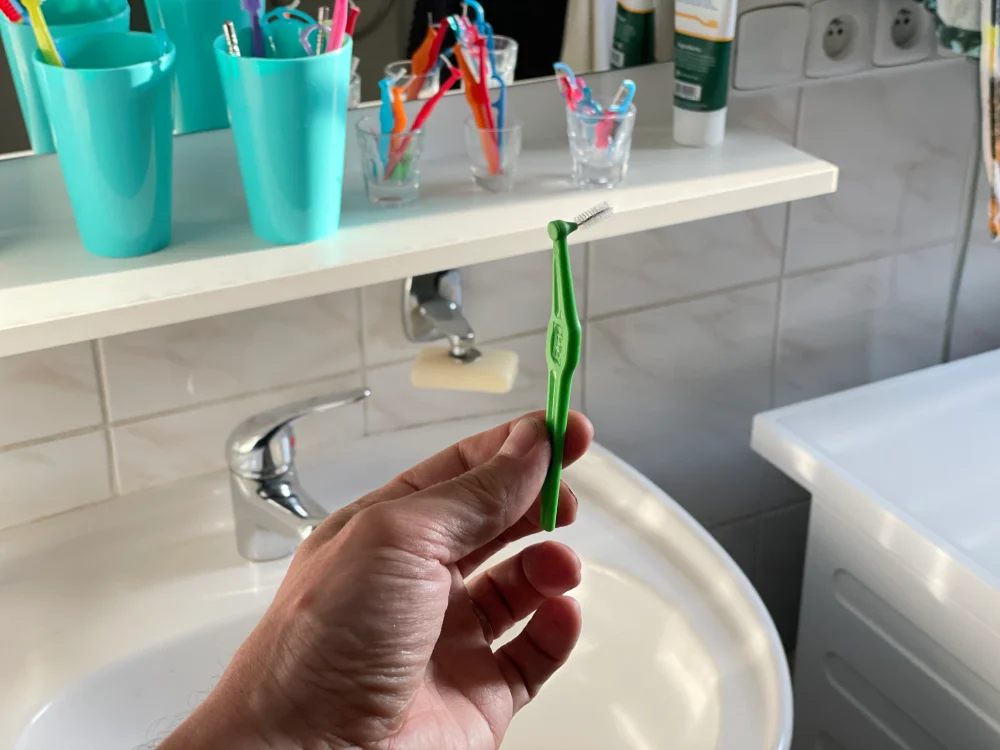
- We recommend using L-shaped interdental brushes for the back teeth. Thanks to their shape, these interdental brushes allow you to reach the back spaces between the molars more easily.
- Don’t be too harsh on your healthy teeth. It may cause bleeding or injury. Use a gentle and sweeping motion.
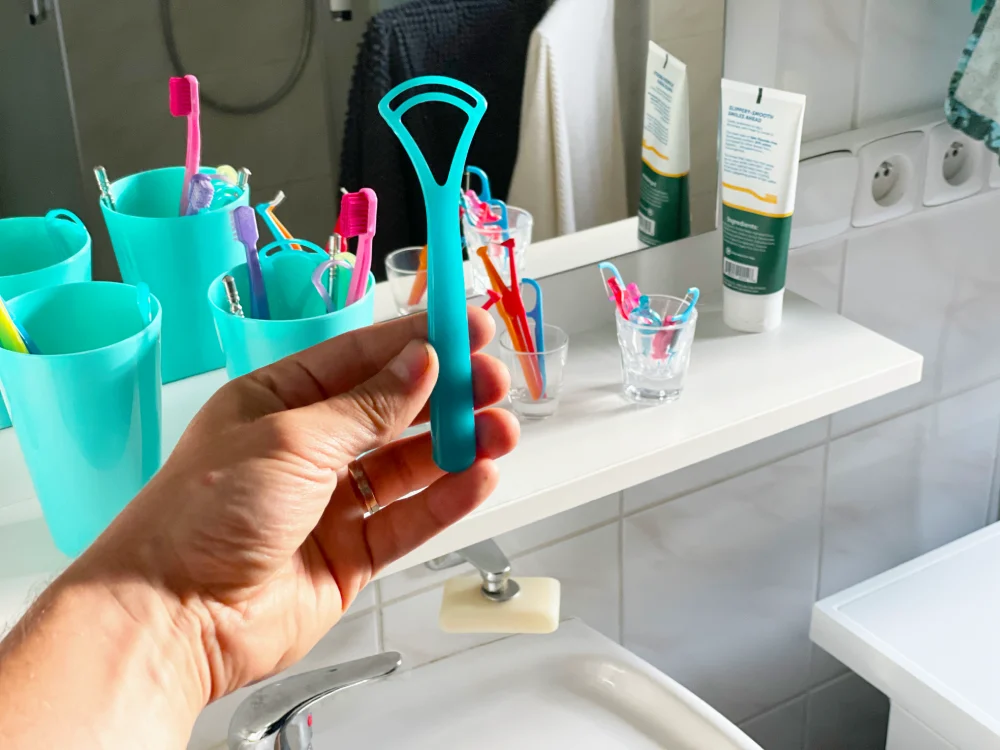
- Remember, you should to clean your tongue too as it can be a place where bacteria grow. Mouthwashes do not effectively clean the tongue. Use a tongue scraper for your tongue. You can buy a plastic one if you want. The stainless steel ones are not necessary – plastic tongue scrapers will suffice. But it’s about your choice.
- Use water to wash away all the bits of food, and the toothpaste from the oral cavity and the toothbrush. However, some studies say that using water to rinse the toothpaste would wash away the fluoride. So, you should just spit out the toothpaste. If you want to rinse use minimal water, and do not be aggressive. [3]
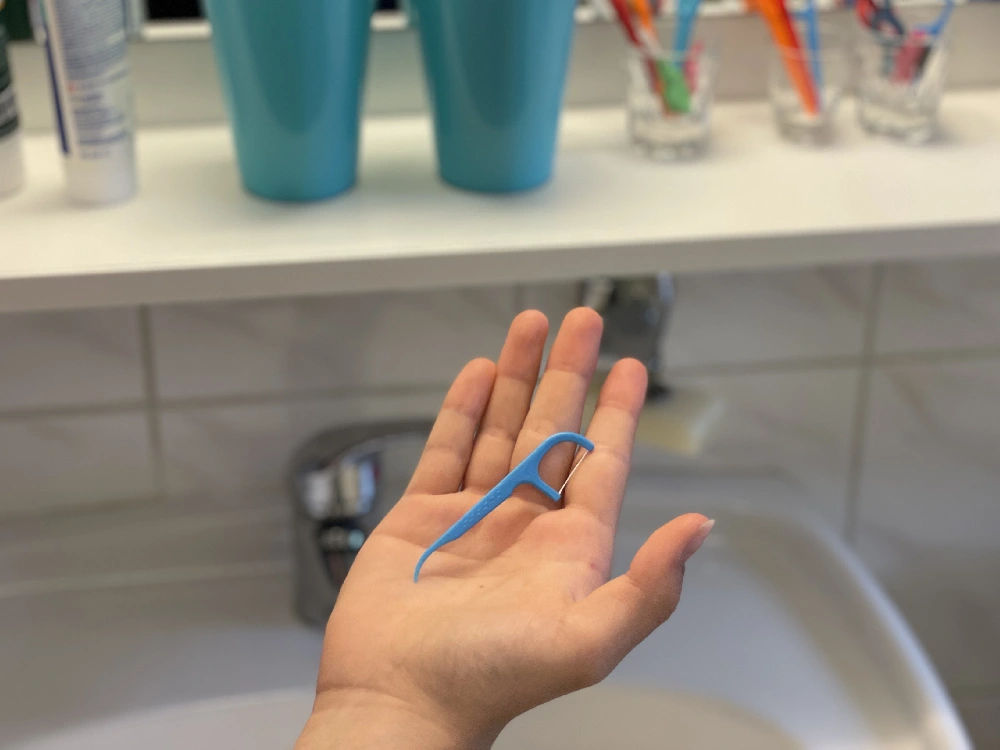
- You can use a toothpick with a dental floss. It can be used anywhere, anytime with ease. You can find a toothpick that is bent on the side with dental floss stretched on the other side.
- Look at your mouth thoroughly to see if any food particles are still stuck around. You can remove them with water, or slightly brush them again.
- Pay a visit to the dentist every six months for professional cleaning of your teeth. This will protect you from any oral infections, diseases, or foul smells. It keeps your teeth shiny, and healthy. You can smile with confidence if your teeth are brushed properly.
- As additional dental hygiene, we recommend chewing healthy chewing gum containing xylitol. They prevent tooth decay and provide many health benefits.
Advantages Of Effective Brushing
If you think brushing is not required, or it is a waste of time, you are wrong. Your oral health is vital for your overall wellness. You should not push off this task. It’s essential to do it at the right time. It’s not a hard job, just learn a few tips and spend at least 2 minutes brushing your teeth twice a day (4 minutes total)! Here are some of the benefits you can get from brushing properly:
- It will keep all oral health issues away from you. You don’t have to worry about decay or gum infections if you are brushing the right way.
- Since it keeps all the diseases away, you don’t have to pay for treating any infection. Dental procedures like surgery or tooth extraction are very costly.
- Your mouth would stay fresh, and smell good throughout the day. It will give you a shiny look. You will always smile brightly with confidence.
Tips For Children
Your child must brush effectively to prevent oral health issues later in life. You have started cleaning their teeth from their first days of life. For children below two years, you can clean using a wipe or a soft cloth. You should always teach them how to brush their teeth effectively. Children take time to learn things. It is recommended for the parents to assist them till 11 years of age. A good strategy is to first allow them to brush themselves, and then you can do it again. Once they reach 8 years of age, they can brush themselves, but you should accompany them. Keep monitoring and educating them about the importance of brushing.
References
[1] Dental plaque – https://pubmed.ncbi.nlm.nih.gov/22319749/
[2] Comparison of electronic and manual brushes – https://www.ncbi.nlm.nih.gov/pmc/articles/PMC3459492/
[3] Effect of post-brush rinsing – https://pubmed.ncbi.nlm.nih.gov/12399689/

